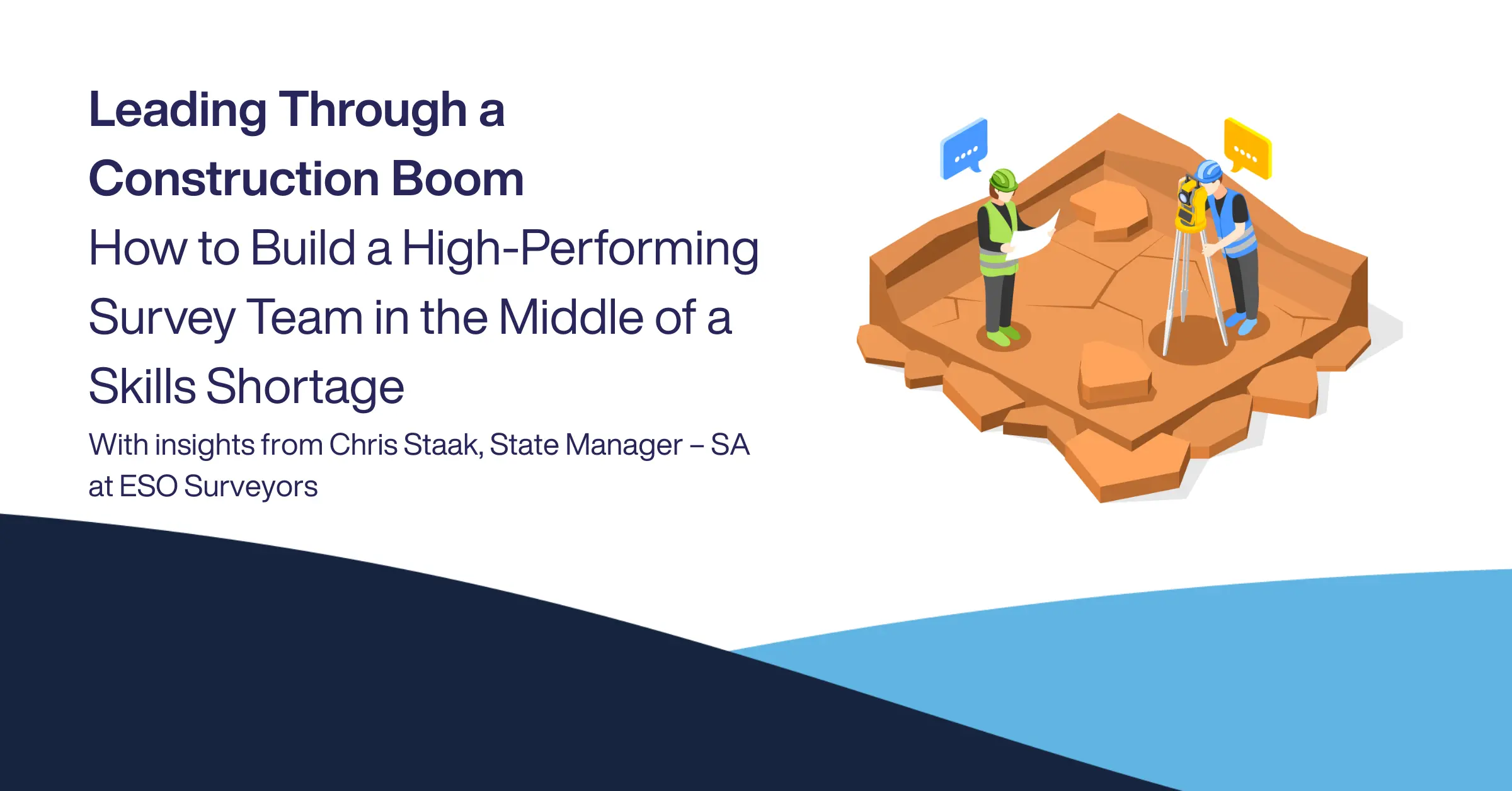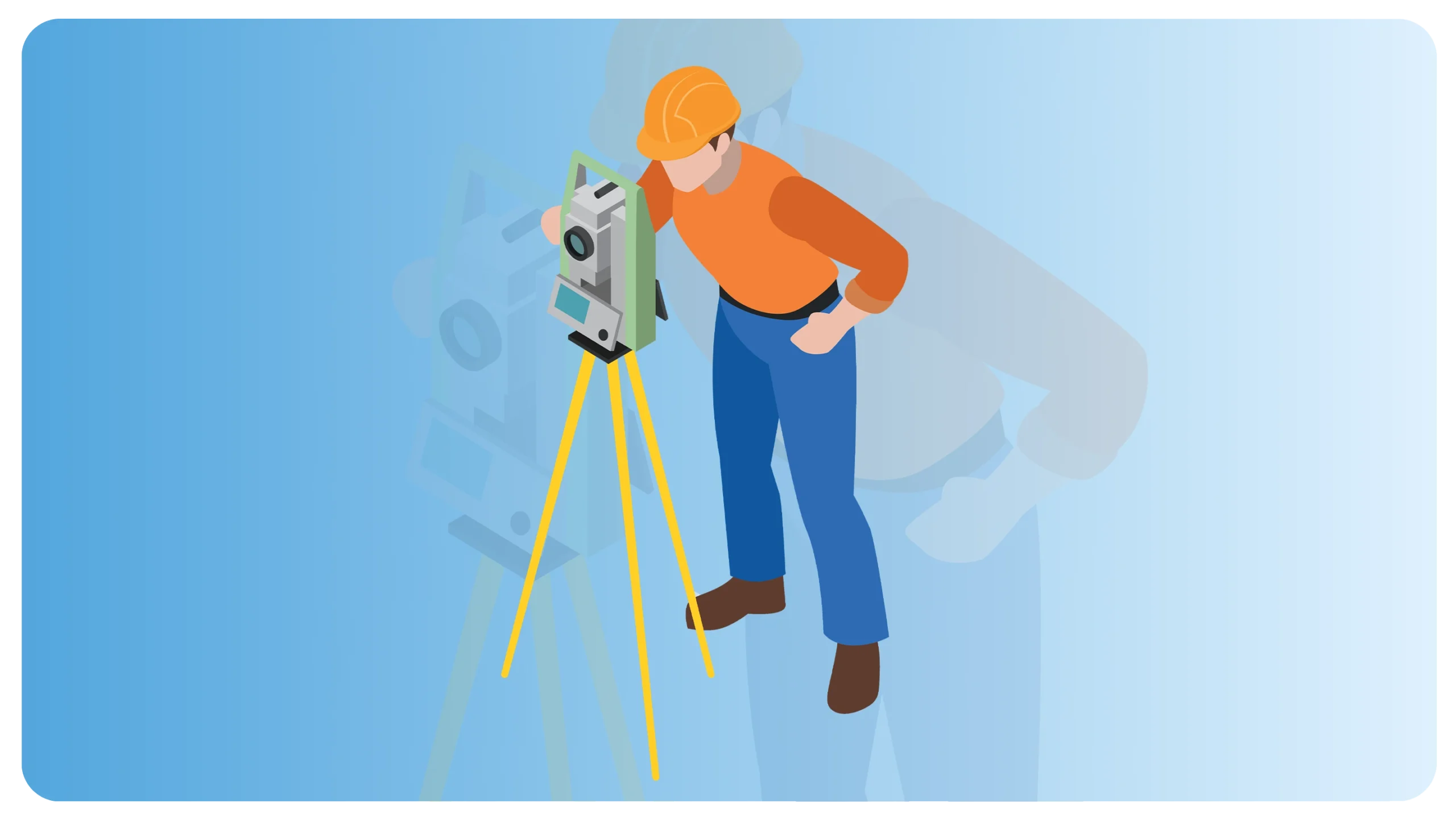Leading Through a Construction Boom: How to Build a High-Performing Survey Team in the Middle of a Skills Shortage

Australia is experiencing an infrastructure boom unlike anything we’ve seen before, and South Australia is at the heart of it.
Projects like the $16.5 billion Torrens to Darlington upgrade, part of the North-South Corridor in Adelaide, are redefining not only the scale of civil construction, but the complexity that project teams—and especially surveyors—now face.
In a candid conversation with Joel Gregory, CEO of 12d Synergy, Chris Staak, who is the State Manager – SA for ESO Surveyors, shared a detailed view into what’s really happening on the ground—from workforce shortages and data challenges to automation and scaling smarter survey teams.
“We’re at the coalface of complexity.” – Chris Staak, ESO Surveyors
As Staak explains, the job of a surveyor has changed dramatically. Once focused on pegging out coordinates in greenfield sites, today’s surveyors are dealing with underground networks, incomplete service records, and high-pressure timelines that demand faster, cleaner, and more collaborative workflows.
“These days, surveyors are managing complex data that often arrives late, and then are expected to carry out fieldwork straight away,” says Staak. “We’re working on tight deadlines with big expectations, especially on mega projects.”
The Real Cost of Poor Service Data: $4.6 Billion a Year
One of the most urgent and costly issues facing construction projects today? Striking underground services.
“Dial Before You Dig released a stat that the combined direct and indirect cost of service strikes was around $4.6 billion last year across Australia,” Staak shares. “It’s a massive inefficiency—and unfortunately, surveyors are often the ones blamed when it happens.”
Brownfield projects, where existing underground services are already in place, present huge challenges. In many cases, historical record-keeping was lax, meaning today’s field teams are left to make sense of a spaghetti mess of cables beneath the surface, with huge risk.
“A lot of those services were laid down without much planning or documentation. That’s what makes it so complex now,” Staak explains. “You’re dealing with decades of underground chaos.”

From Fieldwork to Data Management: The Surveyor’s Evolving Role
Surveyors are no longer just technicians with tripods—they’re becoming data managers, quality controllers, and collaboration enablers.
“The volume, complexity, and urgency of data has all increased,” says Staak. “And that’s changed the skillset surveyors need to have. We’re no longer just measuring—we’re curating, checking, integrating, and sharing data across teams.”
The ability to handle this complexity has become a core advantage for ESO, particularly as they scale their presence across Australia.
Scaling from One to Forty: ESO’s South Australian Story
Twelve years ago, Staak launched ESO’s South Australian office solo. Today, he leads a 40-person team delivering on some of the most complex infrastructure projects in the state.
What drove that success?
“A big part of it has been structure,” Staak says. “We’ve implemented consistent project templates, standardised naming conventions, and a unified way of managing our data—whether it’s a mega project or a small job.”
Having a systemised data environment means that any surveyor can jump onto any project and know exactly where to find the information they need.
“We don’t have time to waste. When resources are tight, systems become the backbone of performance,” Staak explains.
Tech in the Field: From Drones to Robots
Modern tools are helping surveyors do more with less. Staak points to advances like reality capture, robotic total stations, and even automated line-marking robots that reduce manual labour.
“We’ve had surveyors walking 10 kilometres just to mark lines on asphalt. Now we use robots that do it for them—and they just follow along in a car,” he says.
These tools don’t eliminate the role of the surveyor. Instead, they elevate it, allowing professionals to focus on quality assurance, data integration, and project performance.
The Talent Gap: A Crisis in the Making
While projects are growing, the talent pool isn’t. The closure of the University of South Australia’s surveying degree has left a skills gap that will take years to close, even with Flinders University stepping in to revive the program.
“At the peak, we were getting 45 to 50 graduates a year. Now we’re looking at a five-year gap where those people just won’t exist,” Staak warns.
ESO is actively working with universities and TAFEs to get students involved early and expose them to real-world projects.
“We’re not waiting for graduates—we’re building them,” says Staak. “If we want to survive this boom, we have to grow the next generation ourselves.”
Data, Structure, and the Dream of a Connected Site
Ultimately, Chris Staak believes that the future of surveying—and successful infrastructure delivery—relies on shared data environments and seamless collaboration across disciplines.
“The dream is everyone working from a common data environment. One system. One language. One source of truth,” he says. “We’re not there yet—but we’re working on it.”
Until then, ESO continues to lead by example: scaling smart, investing in systems, and building high-performing teams that can thrive even under pressure.
Key Takeaways for AEC Leaders
- Service strikes cost Australian projects over $4.6B annually—surveyors are your first defence.
- Surveyors now manage data as much as they measure points—treat them as information leaders.
- Standardised templates and project structures dramatically boost team efficiency and handove.rs
- Smarter tech (like drones and line-marking robots) frees surveyors from repetitive work.
- The surveying talent gap is real—engage students early and build internal pipelines now.
- A shared Common Data Environment (CDE) is the gold standard, but consistency is key even before full integration.
Surveying Is the Linchpin of Delivery
Surveyors aren’t just on the sidelines—they’re at the centre of project success. As Chris Staak puts it:
“We’re responsible for setting out the design data. We’re responsible for capturing what’s been built. We’re the link between design and delivery.”
In an age of booming infrastructure and shrinking resources, investing in your survey teams—and the systems that support them—is not a luxury. It’s a necessity.
Want to learn how ESO Surveyors streamlined their project workflows and scaled efficiently with 12d Synergy?
Explore our solutions or watch the full conversation with Chris Staak.
Ready to learn more about 12d Synergy?
Explore how 12d Synergy has solved business challenges and helped streamline processes for projects in the AEC industry by exploring our case studies.
